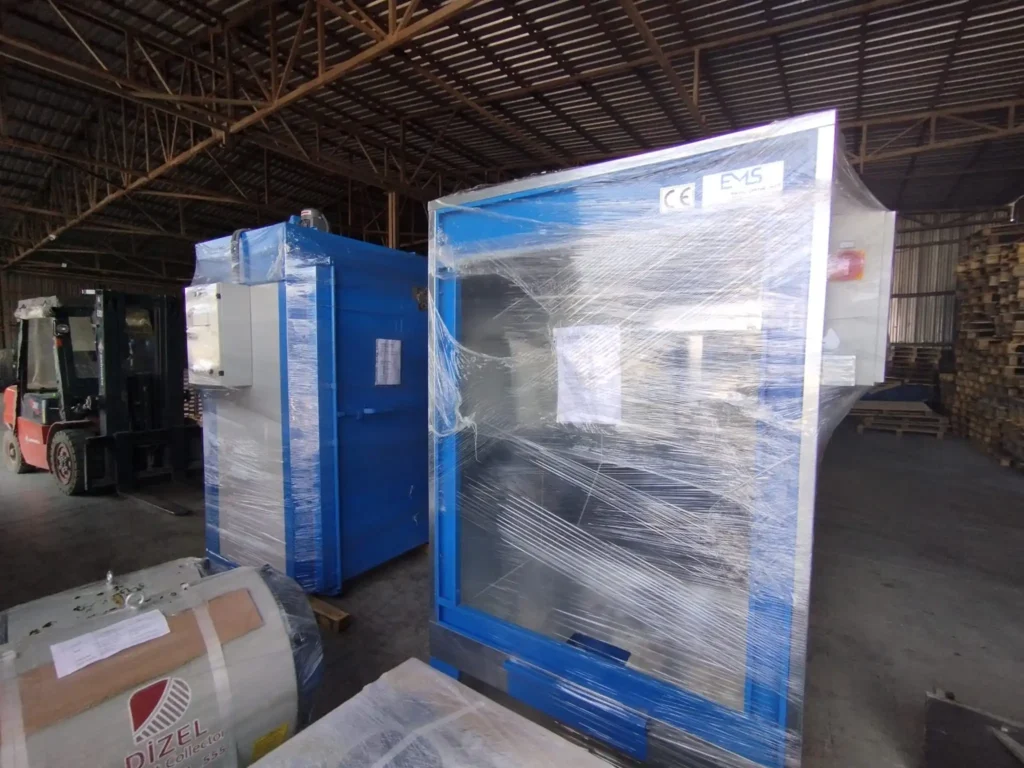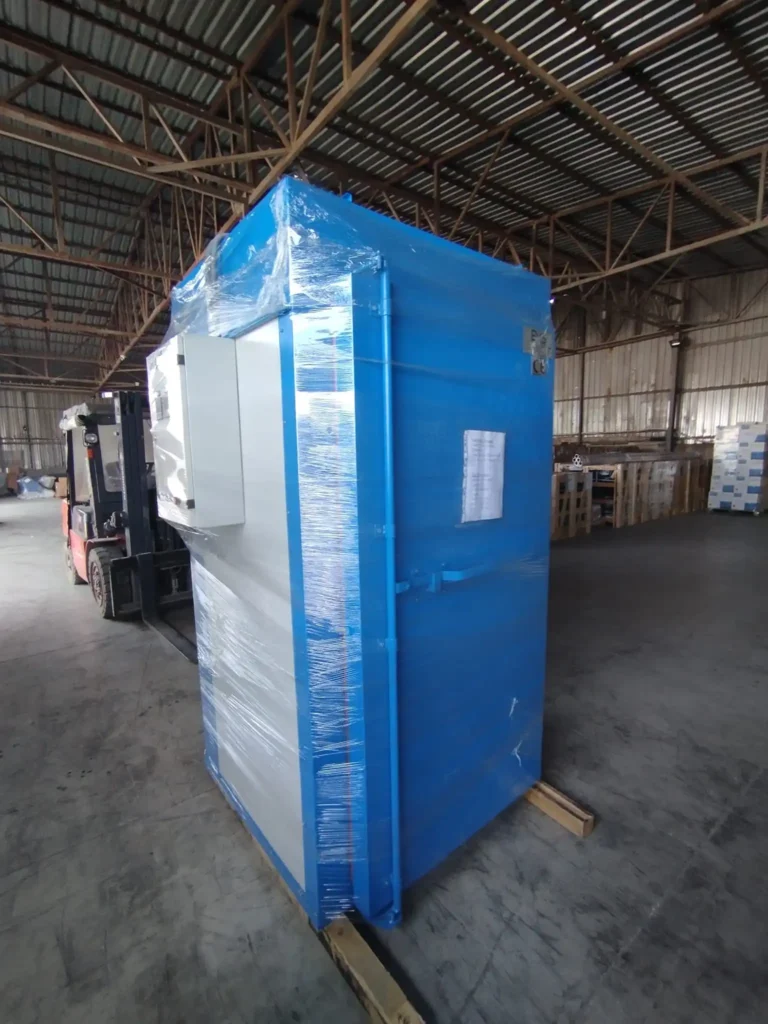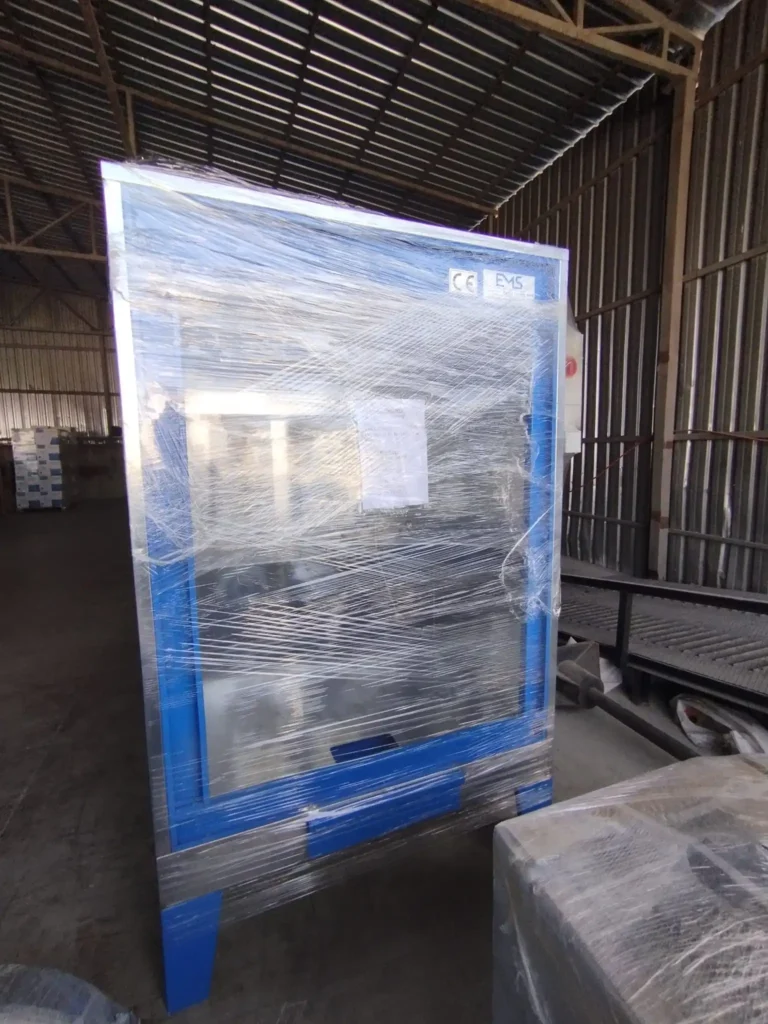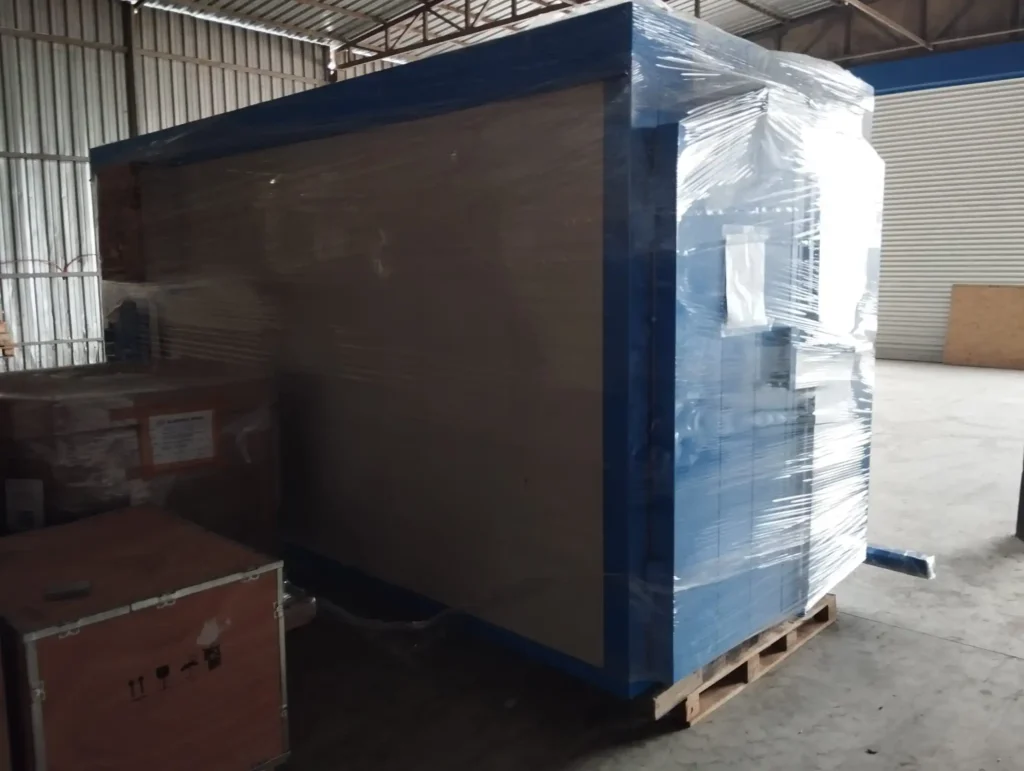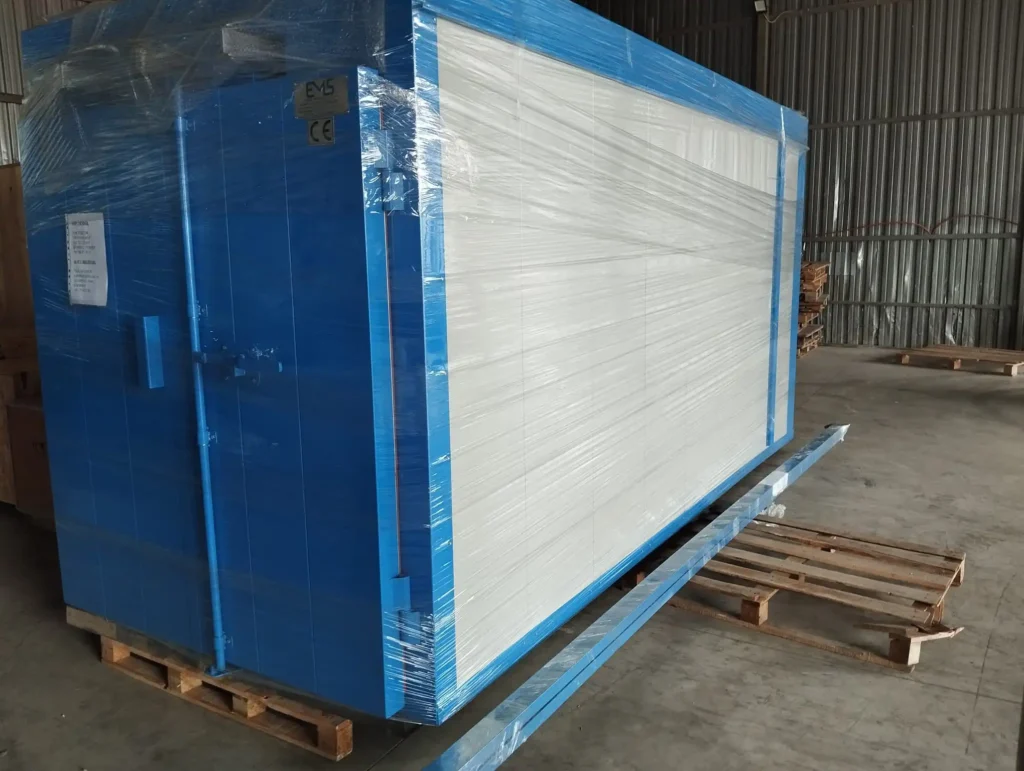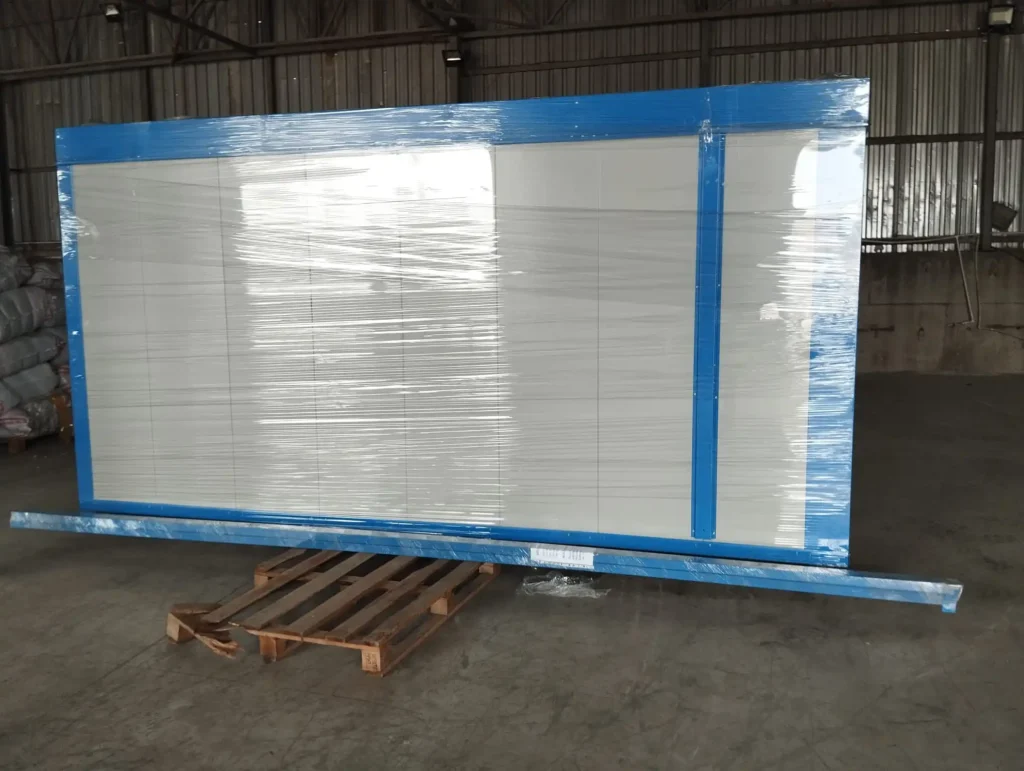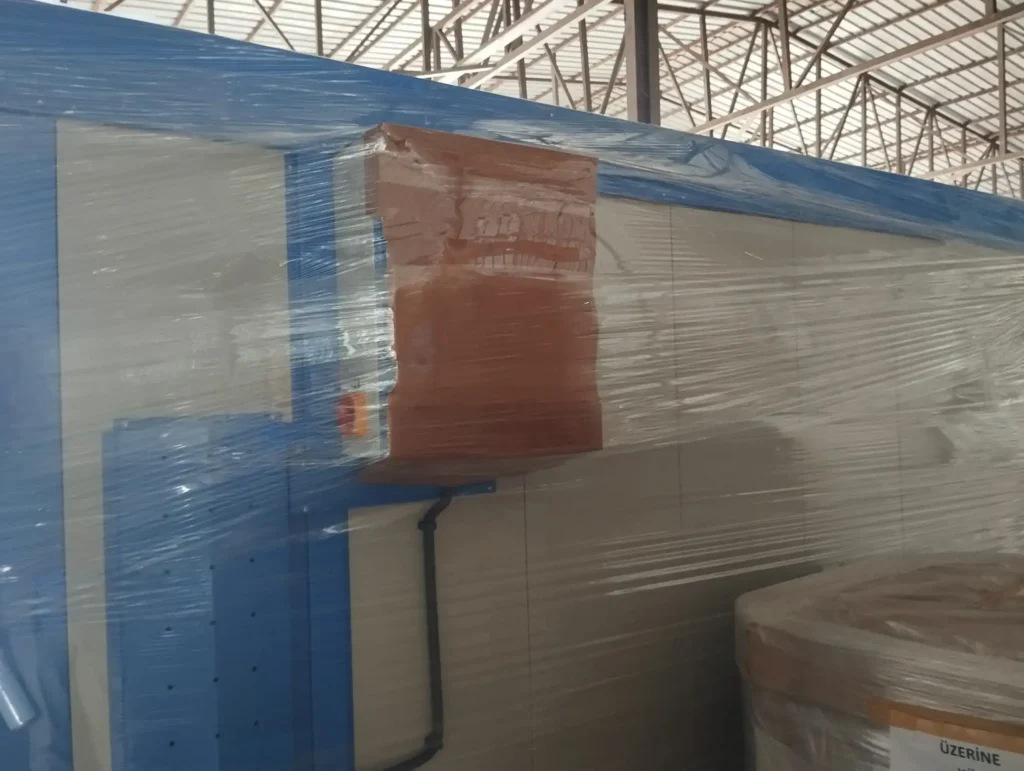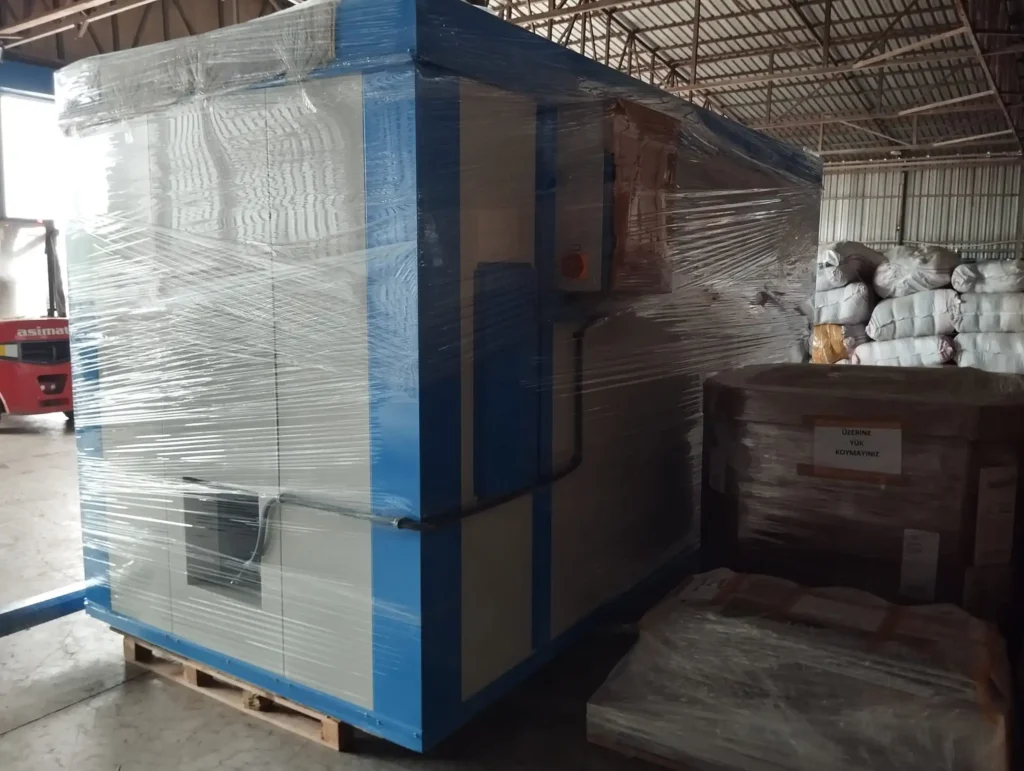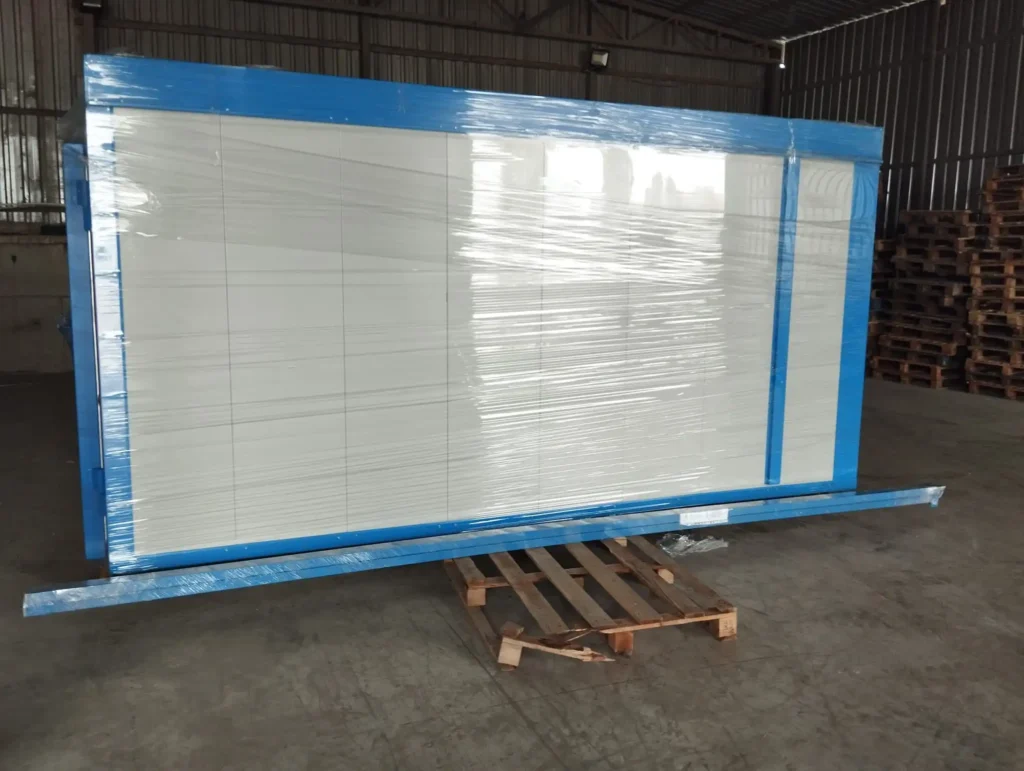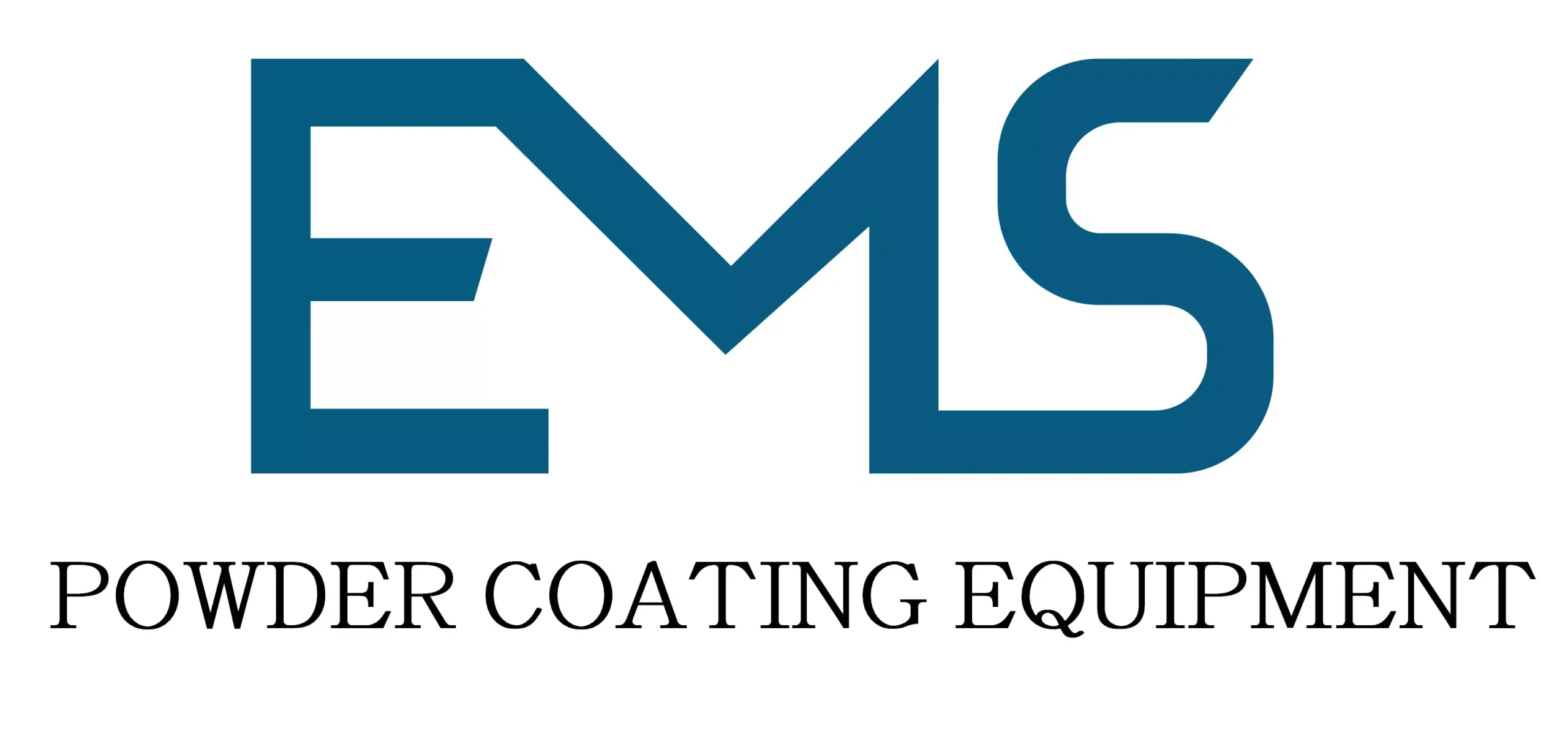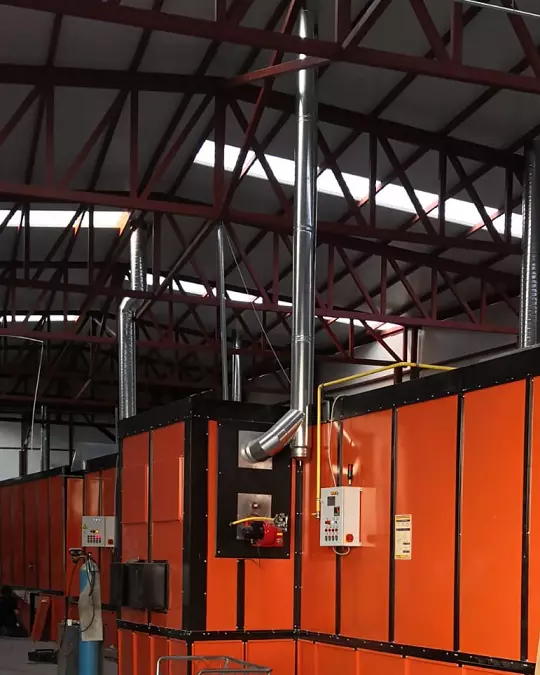
Coating Line for Mechanical Equipment: Powder coating has become a critical process in industrial applications, offering a durable, high-quality finish that is both aesthetically pleasing and resistant to corrosion. Powder coating plants are at the heart of this process, housing the sophisticated machinery and equipment required to deliver consistent and superior results.
Unlike traditional liquid paint, powder coating is applied as a free-flowing, dry powder. This powder is typically applied using electrostatic powder coating equipment, which charges the particles and ensures they adhere firmly to the surface of the material. Once coated, the items are transferred to an oven for powder coating, where the powder undergoes a curing process. The heat from the paint curing oven melts the powder, forming a hard, uniform layer that is both protective and decorative.
The advantages of powder coating are manifold. Not only does it provide a durable finish that is resistant to scratches, chemicals, and UV light, but it is also environmentally friendly. The process produces negligible volatile organic compounds (VOCs), making it a preferred choice for industries focused on sustainability. This growing demand for eco-friendly solutions has spurred innovation in powder coating machinery, with manufacturers continually advancing their offerings to meet the needs of various industries.
One of the key components in a successful powder coating operation is the quality of the coating machines and ovens used. Industrial powder coat ovens, for instance, play a pivotal role in ensuring the powder is cured evenly, resulting in a smooth and durable finish. These ovens come in various sizes, from large powder coat ovens suitable for big components to more compact powder ovens designed for smaller parts.
Great! I’ll proceed with the full text based on the outline provided. This will be a lengthy piece, so I will deliver it in multiple parts. Here’s the first section.
Introduction to Powder Coating
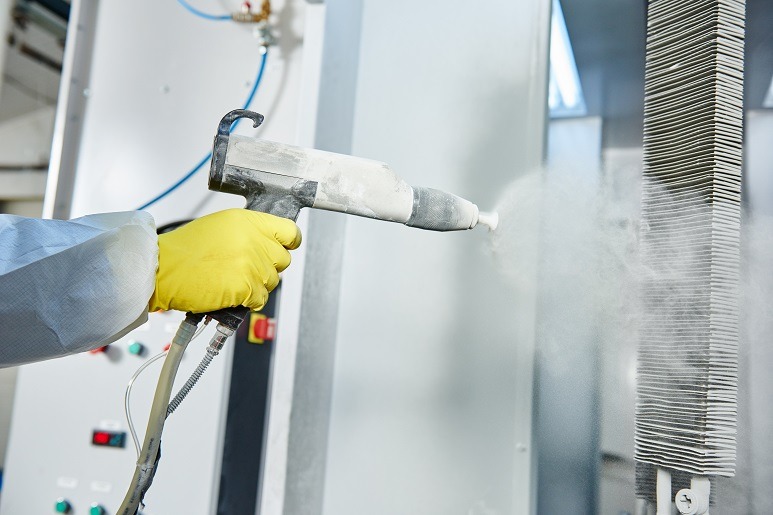
Powder coating has revolutionized the finishing industry, providing a superior alternative to traditional painting methods. It is widely recognized for its durability, efficiency, and environmental benefits. At the core of this process are powder coating plants, which are equipped with advanced machinery and systems designed to deliver consistent, high-quality finishes across a range of products.
Powder coating involves applying a dry powder, typically made from a mix of fine resin and pigment particles, to a metal substrate. The powder is electrostatically charged and sprayed onto the surface using specialized electrostatic powder coating equipment. This method ensures that the powder adheres evenly across the surface, even in complex geometries, which is often a challenge with liquid paints.
Once the powder is applied, the coated item is subjected to heat in a powder coat oven or industrial oven for powder coating. The high temperatures in these ovens cause the powder to melt and fuse into a solid, uniform finish. The paint curing oven or powder coat curing oven is critical in this stage, as it ensures the coating is durable and long-lasting, capable of withstanding harsh environmental conditions.
One of the key advantages of powder coating is its environmental friendliness. Unlike traditional liquid paints, powder coatings do not contain solvents and release minimal volatile organic compounds (VOCs) into the atmosphere. This makes them a preferred choice for industries looking to reduce their environmental footprint. Moreover, powder coating plants are designed to reclaim and reuse excess powder, further minimizing waste and reducing costs.
To achieve optimal results, powder coating machinery must be precisely calibrated and maintained. High-quality coating machines and industrial spray coating equipment are essential for ensuring that the coating is applied evenly and consistently. Additionally, the use of powder coating systems for sale has made it easier for manufacturers to implement powder coating processes in-house, thereby reducing reliance on third-party service providers.
As industries continue to demand more efficient and sustainable finishing processes, the role of powder coating will only grow. Innovations in powder coating equipment and coating lines for mechanical equipment are driving this growth, allowing manufacturers to achieve better performance, lower costs, and reduced environmental impact. Whether it’s for automotive parts, household appliances, or industrial machinery, powder coating offers a robust solution that meets the needs of modern manufacturing.
Powder Coating Process
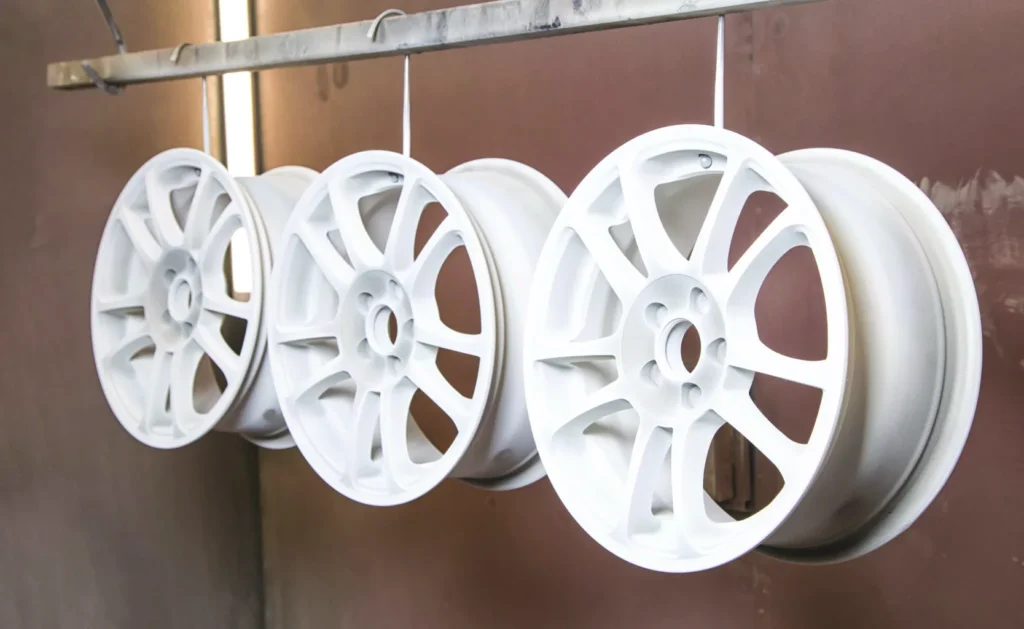
The powder coating process is an intricate sequence of steps designed to produce a durable and aesthetically pleasing finish on a variety of substrates. This process is widely used across industries for coating metal products, ensuring that they are both protected from corrosion and visually appealing.
Surface Preparation for Powder Coating
Surface preparation is a critical first step in the powder coating process. Before the powder can be applied, the surface of the item must be thoroughly cleaned and pre-treated to ensure optimal adhesion of the powder coating. This often involves the removal of oils, dirt, rust, and other contaminants that could interfere with the coating’s effectiveness.
One common method of surface preparation is iron phosphate coating, which involves treating the metal with a solution that deposits a layer of iron phosphate on the surface. This layer enhances the adhesion of the powder coating and improves corrosion resistance. Proper surface preparation is essential in achieving a high-quality finish, as it directly affects the coating’s durability and appearance.
Application of Powder Coating
Once the surface is prepared, the powder coating is applied using electrostatic powder coating equipment. This equipment charges the powder particles electrostatically, causing them to cling to the metal surface. The process ensures an even distribution of the powder, even on complex shapes and recesses, which can be challenging for traditional liquid paints.
The efficiency of this process is significantly enhanced by using advanced coating machines and powder coating units. These machines are designed to handle large volumes of work, ensuring that the powder is applied consistently across all items. For large-scale operations, electrostatic powder coating lines are employed, allowing for continuous production with minimal downtime.
Curing the Powder Coating
After the powder has been applied, the coated item is transferred to a powder coat oven for curing. The curing process is a vital step that determines the final properties of the coating. In the oven, the powder melts and flows into a continuous film that bonds to the surface. As it cools, the coating hardens into a tough, resilient finish.
There are several types of ovens used in powder coating, each designed to meet specific needs:
- Paint Curing Ovens and industrial paint curing ovens are used for larger production runs where uniform heat distribution is critical.
- Powder coat curing ovens are specialized for the precise temperatures needed to cure different types of powder coatings.
- Large powder coat ovens are essential for handling oversized parts or large batches of products, ensuring that the entire surface is evenly cured.
The choice of oven depends on factors such as the size of the items being coated, the type of powder used, and the production speed. Powder coating oven manufacturers offer a wide range of options, from small batch ovens to fully automated curing systems integrated into powder coating lines.
Final Inspection and Quality Control
Once the items have been cured, they undergo a final inspection to ensure the coating meets the required standards. This includes checking for uniformity, thickness, adhesion, and any defects such as bubbles or pinholes. Quality control is an essential part of the powder coating process, as it ensures that the finished products are not only visually appealing but also durable and fit for their intended use.
With advances in powder coating machinery and industrial paint curing ovens, manufacturers can achieve high levels of consistency and quality, even in large-scale operations. The integration of OEM coating equipment production lines and powder coating systems for sale into manufacturing facilities has streamlined the powder coating process, making it more efficient and cost-effective.
Ovens and Curing Equipment
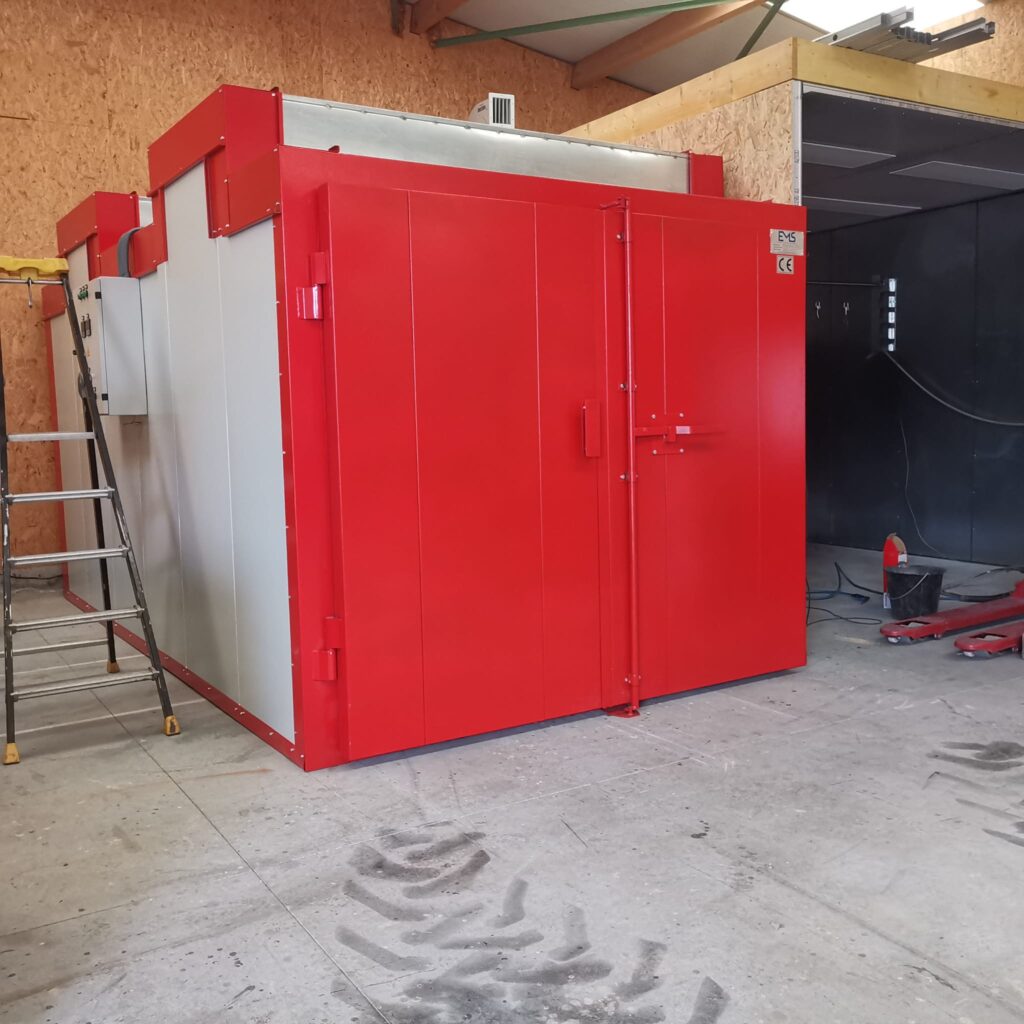
The curing process is one of the most crucial stages in powder coating, where the applied powder is transformed into a durable, high-quality finish. The efficiency and precision of this stage largely depend on the quality of the ovens and curing equipment used.
Types of Ovens Used in Powder Coating
There are several types of ovens specifically designed for the powder coating process, each suited to different production needs:
- Large Powder Coat Ovens: These ovens are designed to handle oversized items or large batches of products. They are crucial for industries that coat large metal components, such as automotive parts or industrial machinery. The size and capacity of these ovens allow for efficient curing of bulky items, ensuring even heat distribution across the entire surface.
- Industrial Paint Curing Ovens: These ovens are built for heavy-duty, continuous use in large-scale manufacturing environments. They offer consistent temperature control and can handle a high volume of items, making them ideal for industries requiring mass production of coated parts.
- Powder Coat Curing Ovens: Specialized for the powder coating process, these ovens provide precise temperature control to ensure that the powder melts and flows uniformly. The result is a smooth, durable finish that adheres strongly to the substrate.
- Powder Ovens: These are versatile ovens used for smaller batches or items that require less intensive curing processes. They are often used in smaller facilities or for specialty coatings where precision and control are paramount.
Each type of oven serves a specific purpose, and selecting the right one is critical for achieving the desired finish. Ovens for powder coating must be capable of maintaining stable temperatures, as even minor fluctuations can affect the quality of the final product.
Role of Paint Curing Ovens and Industrial Paint Curing Ovens
Paint curing ovens and industrial paint curing ovens play a vital role in ensuring that the powder coating properly adheres to the surface of the substrate. The curing process involves heating the coated items to a temperature where the powder melts and bonds to the material, forming a continuous, protective layer.
The effectiveness of a paint drying oven depends on its ability to maintain uniform temperatures throughout the curing chamber. This uniformity is crucial because uneven heating can lead to defects in the coating, such as bubbles, orange peel texture, or incomplete curing. High-quality industrial paint curing ovens are designed with advanced airflow systems and precise temperature controls to prevent these issues.
Importance of Choosing the Right Equipment
Selecting the right oven and curing equipment is essential for ensuring the quality and durability of the powder coating. The powder coating system must be matched to the specific needs of the production line, considering factors such as the size and shape of the items being coated, the type of powder used, and the required production speed.
For companies looking to set up or upgrade their powder coating facilities, there are numerous powder coating systems for sale that offer a range of options. These systems can include everything from small batch ovens for specialty coatings to large-scale OEM coating equipment production lines capable of handling high volumes of parts.
Powder coating oven manufacturers offer customized solutions that can be tailored to meet the specific requirements of different industries. Whether it’s a powder coating paint booth integrated with a large powder coat oven or a complete powder coat system, investing in high-quality equipment is crucial for achieving superior results.
Coating Lines and Machinery
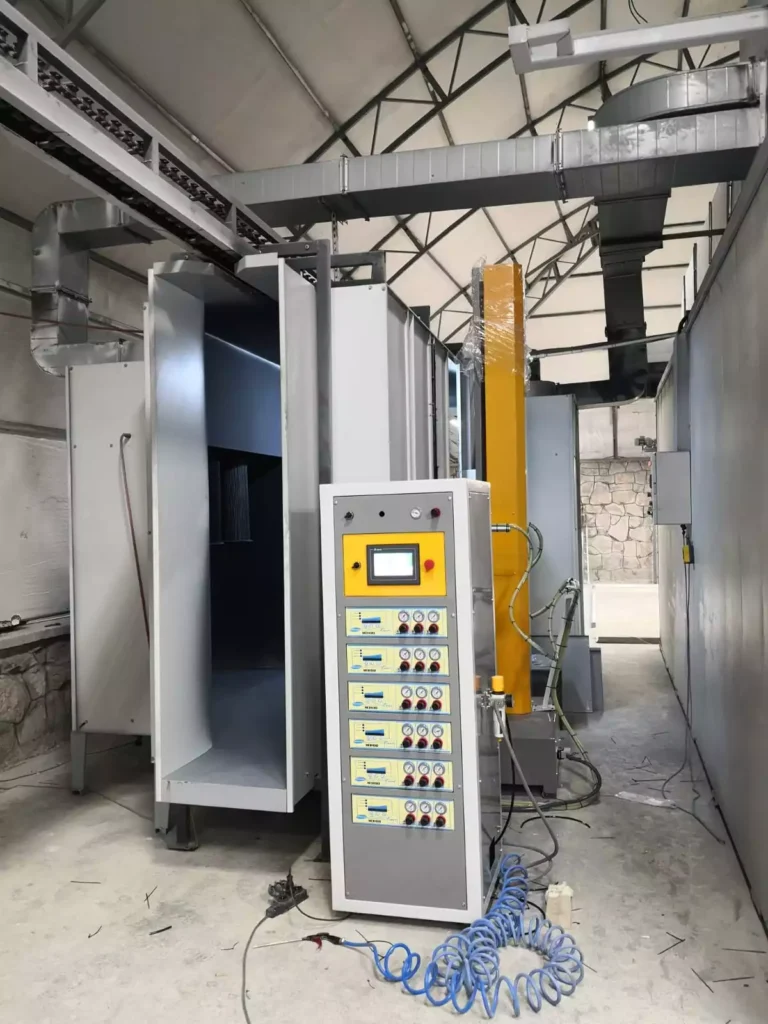
Coating lines and machinery are the backbone of any powder coating operation. These systems ensure that the powder coating process is efficient, consistent, and scalable, allowing manufacturers to meet the demands of various industries. From small-scale setups to fully automated production lines, the right machinery and equipment can make a significant difference in the quality and speed of the coating process.
Overview of Coating Lines for Mechanical Equipment
Coating lines for mechanical equipment are specialized systems designed to apply powder coatings to a wide range of metal components. These lines are often used in industries such as automotive, aerospace, and heavy machinery, where high durability and precise coatings are required. The lines are configured to handle the specific shapes and sizes of the components being coated, ensuring that every part receives a uniform layer of powder.
A typical coating line includes several key components:
- Surface Preparation Stations: These stations clean and prepare the parts for coating, often including stages such as washing, degreasing, and applying an iron phosphate coating. Proper surface preparation is essential for ensuring the powder adheres correctly to the metal.
- Powder Coating Booths: The parts are then moved into powder coating spray booths, where the powder is applied using electrostatic powder coating equipment. These booths are designed to capture and recycle any overspray, reducing waste and ensuring an even application.
- Curing Ovens: Once coated, the parts are transferred to powder coat ovens or industrial ovens for powder coating. These ovens cure the powder, transforming it into a hard, protective finish.
- Material Handling Equipment: Throughout the process, paint conveyor systems and power and free conveyor systems move the parts from one station to the next. These systems are designed for efficiency, minimizing handling and reducing the risk of damage to the coated parts.
Role of OEM Coating Equipment Production Lines
OEM coating equipment production lines are highly specialized systems tailored to meet the specific needs of original equipment manufacturers (OEMs). These lines are often fully automated, allowing for high-volume production with minimal manual intervention. The equipment is designed to work seamlessly with other production processes, integrating coating into the overall manufacturing workflow.
OEM lines often include advanced features such as:
- Automated Spray Guns: These systems use robotic arms to apply the powder coating with precision, ensuring consistent coverage even on complex parts.
- High-Efficiency Curing Ovens: These ovens are optimized for fast curing times, enabling high throughput while maintaining quality.
- Integrated Quality Control: OEM lines often include built-in inspection systems that check the quality of the coating in real-time, allowing for immediate adjustments if any issues are detected.
Efficiency and Automation in Powder Coating Lines
Efficiency and automation are critical in modern powder coating lines, where production speed and consistency are paramount. Powder coating systems for sale today often feature state-of-the-art automation technology, allowing manufacturers to increase productivity while reducing labor costs.
Automated coating lines can handle a wide range of products with minimal setup time, making them ideal for industries with diverse production needs. These lines are often equipped with programmable logic controllers (PLCs) that manage every aspect of the process, from surface preparation to curing. This level of control ensures that each part is coated to exact specifications, reducing waste and rework.
Moreover, automated systems can be easily scaled to meet changing production demands. Whether it’s a small batch or a large run, the flexibility of modern powder coating equipment allows manufacturers to adapt quickly to market needs.
Specialized Machinery for Different Industries
Different industries have unique requirements when it comes to powder coating, and the machinery used must be able to meet these demands. For example:
- Metal Coating Machinery: This equipment is designed to handle the challenges of coating metal parts, such as those used in automotive or construction industries. These machines must be robust and capable of applying thick, protective layers that can withstand harsh environments.
- Construction Machinery Painting Lines: These lines are built to coat large, heavy-duty parts used in construction equipment. The machinery must be able to handle the size and weight of these components while applying a durable, weather-resistant finish.
- Powder Coating for Doors: Coating doors, especially metal ones, requires machinery that can apply a uniform, smooth finish without drips or streaks. The equipment must also be able to handle the large surface area of doors efficiently.
Selecting the right machinery and coating lines is crucial for ensuring that the powder coating process meets the specific needs of each industry. By investing in high-quality equipment, manufacturers can achieve superior results, reduce production costs, and increase overall efficiency.
Specialized Coating Systems
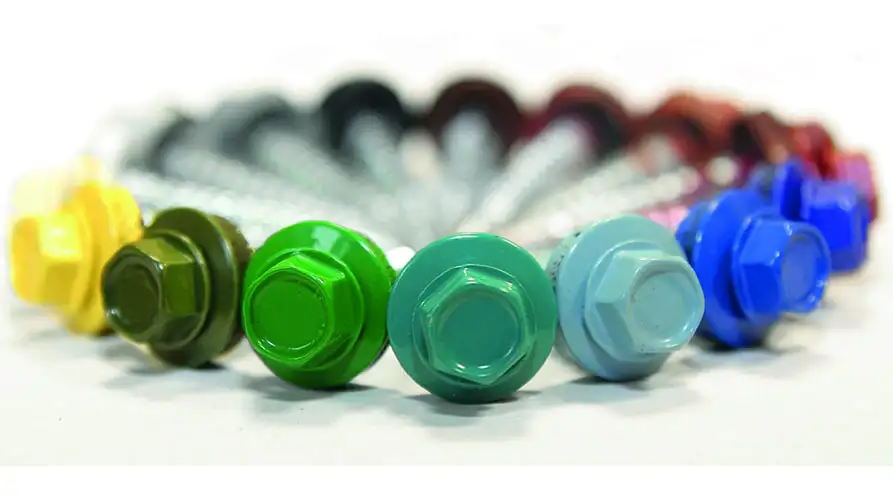
Specialized coating systems are designed to meet the unique needs of different industries, providing tailored solutions that enhance the performance and durability of coated products. These systems integrate advanced technologies and customized machinery to handle specific requirements, whether it’s for heavy-duty industrial applications, intricate metalwork, or specialized consumer products.
Metal Coating Machinery and Its Applications
Metal coating machinery plays a vital role in industries that require robust, long-lasting finishes on metal components. These machines are engineered to apply coatings that protect against corrosion, wear, and environmental damage, ensuring that metal parts maintain their integrity and appearance over time.
In sectors such as automotive, aerospace, and construction, metal components are often exposed to harsh conditions. Metal coating machinery is designed to apply thick, durable layers of powder that can withstand these challenges. For example, automotive parts like chassis and frames require a coating that resists rust and can endure the stresses of daily use. Similarly, in construction, machinery parts need a finish that protects against both physical impact and weather-related wear.
These machines often include features such as:
- High-Temperature Resistant Coatings: Designed to withstand extreme heat, these coatings are essential for parts exposed to high temperatures, such as engine components or industrial machinery.
- Corrosion-Resistant Coatings: Applied to parts that will be exposed to moisture or chemicals, these coatings prevent rust and degradation.
- Aesthetic Finishes: For consumer-facing products, such as appliances or decorative metalwork, the machinery can apply smooth, uniform finishes that enhance visual appeal.
Coating Systems for Specific Industries
Different industries have specific requirements that necessitate specialized coating systems. Here are a few examples:
- Construction Machinery Painting Line: The construction industry demands robust, weather-resistant coatings for machinery used in challenging outdoor environments. These painting lines are equipped with heavy-duty powder coating systems that can apply thick, protective layers quickly and efficiently. The machinery is designed to handle the large size and weight of construction equipment, ensuring even coverage across all surfaces.
- Powder Coating for Doors: Coating doors, particularly metal ones, requires precision and consistency to achieve a smooth, durable finish. The powder coating systems for doors are designed to accommodate large, flat surfaces, ensuring that the powder is applied evenly. These systems often include specialized powder coating spray booths and curing ovens that prevent common issues like drips or uneven curing, resulting in a high-quality finish.
- Industrial Spray Coating Equipment: This equipment is used in industries where spray application is more suitable than electrostatic methods, such as when dealing with irregularly shaped parts or materials that require thicker coatings. Industrial spray coating equipment can handle a variety of substrates, including metals, plastics, and composites, making it a versatile option for manufacturers.
- Electrostatic Coating Systems: These systems are particularly effective for coating metal parts with complex shapes or tight corners, where traditional spraying methods might miss. Electrostatic coating systems charge the powder particles, ensuring they adhere evenly to all surfaces. This method is widely used in industries such as automotive, where precision and consistency are crucial.
Benefits of Specialized Coating Systems
The use of specialized coating systems offers several benefits:
- Customization: These systems can be tailored to meet the specific needs of different industries, ensuring that the coating process aligns with the requirements of the product being coated.
- Efficiency: By using equipment designed for specific applications, manufacturers can achieve faster production times, reduced waste, and lower operational costs.
- Quality: Specialized systems are optimized for the materials and conditions they are designed to handle, resulting in higher-quality finishes that are both durable and aesthetically pleasing.
- Adaptability: Industries with diverse product lines benefit from systems that can easily adapt to different coating needs, from large-scale industrial machinery to smaller, intricate parts.
Investing in the right specialized coating system is essential for manufacturers aiming to produce high-quality products efficiently and cost-effectively. Whether it’s for protecting heavy-duty machinery or enhancing the appearance of consumer goods, the right system can make all the difference in the final outcome.
Handling and Transport Equipment
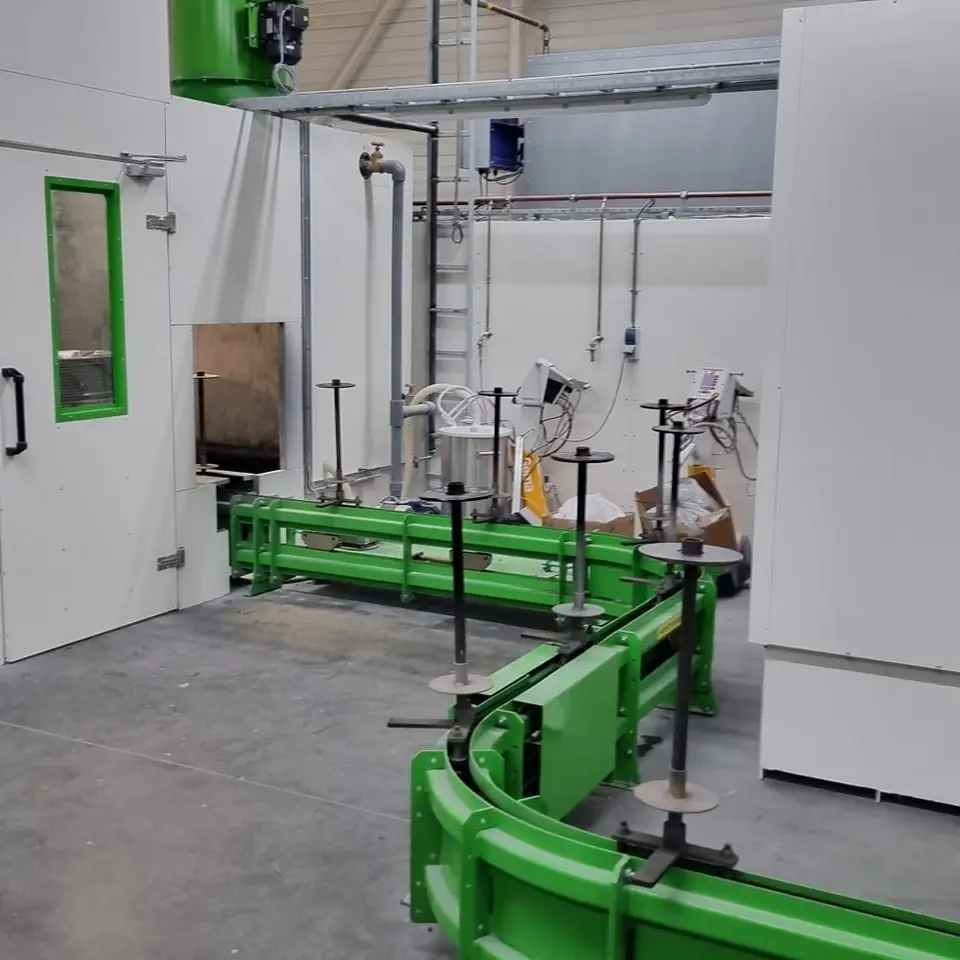
In a powder coating operation, handling and transport equipment are crucial for maintaining efficiency, safety, and quality. These systems ensure that parts move seamlessly through each stage of the coating process, from surface preparation to curing, without damage or delays. The right handling and transport equipment not only streamlines operations but also enhances the overall productivity of the powder coating plant.
Importance of Material Handling in Powder Coating Plants
Material handling plays a critical role in the success of a powder coating plant. Efficient handling systems minimize manual labor, reduce the risk of damage to parts, and ensure that items are processed in a timely manner. This is especially important in large-scale operations, where thousands of parts may need to be coated daily.
Key components of material handling in powder coating plants include:
- Conveyor Systems: Paint conveyors and paint line conveyors are integral to moving parts through each stage of the coating process. These systems are designed to handle a variety of part sizes and weights, ensuring that items are transported smoothly from one station to the next. Power and free conveyor systems are particularly effective in high-volume operations, as they allow for flexible routing and precise control of part movement.
- Paint Booth Material Handling Equipment: Within the powder coating paint booth, specialized handling equipment ensures that parts are positioned correctly for coating. This equipment may include overhead tracks, trolleys, and fixtures that hold parts securely in place while they are being coated. Proper handling within the booth is essential for achieving a uniform finish and preventing defects.
- Blow Off Booths: Before parts enter the coating booth, they often pass through a blow off booth where any remaining dust or debris is removed. This step is crucial for ensuring that the surface is clean and ready for coating, which directly impacts the quality of the final finish.
- Material Handling for Large Parts: In operations that handle large or heavy parts, such as those involved in coating construction machinery or industrial equipment, specialized handling systems are required. These systems may include heavy-duty conveyors, lifts, and robotic arms that can safely move and position large items without manual intervention.
Transport Systems: Power and Free Conveyor Systems, Paint Conveyors, and More
Transport systems are the backbone of any efficient powder coating operation, enabling the smooth movement of parts through the entire process. The choice of transport system depends on factors such as the size and weight of the parts, the layout of the facility, and the desired production speed.
- Power and Free Conveyor Systems: These systems offer flexibility and control, allowing different parts of the line to operate independently. This is particularly useful in complex operations where parts need to be routed to different stations or held in buffer zones before proceeding. Power and free conveyors can handle high volumes of parts with minimal manual intervention, making them ideal for large-scale operations.
- Paint Conveyors: Paint conveyors are specifically designed for moving parts through the various stages of the coating process. They can be customized to suit the specific needs of the operation, whether it’s handling small, lightweight parts or large, heavy items. These conveyors are engineered for smooth operation, reducing the risk of damage to the parts and ensuring consistent processing times.
- Powder Coating Transport Systems: In addition to conveyors, powder coating plants may use other transport systems such as automated guided vehicles (AGVs) or monorails. These systems are designed for specific tasks within the plant, such as moving large batches of parts between different sections or transporting finished products to storage or shipping areas.
Efficiency and Safety in Handling and Transport
Efficiency and safety are paramount when it comes to handling and transport in powder coating plants. The right equipment can significantly reduce the risk of accidents and injuries, while also minimizing downtime and improving throughput.
- Safety Considerations: Handling and transport equipment must be designed with safety in mind. This includes features such as protective guards, emergency stop mechanisms, and ergonomic controls that reduce the risk of operator injury. Regular maintenance and inspections are also crucial for ensuring that the equipment remains in safe working condition.
- Optimizing Efficiency: To optimize efficiency, powder coating plants should invest in high-quality handling and transport systems that are tailored to their specific needs. This might include upgrading to automated systems that reduce manual handling, implementing real-time tracking and monitoring systems, or reconfiguring the layout of the plant to streamline workflows.
In conclusion, handling and transport equipment are essential components of a successful powder coating operation. By investing in the right systems, manufacturers can enhance productivity, ensure the safety of their workers, and achieve consistently high-quality results.
Advanced Technologies in Powder Coating
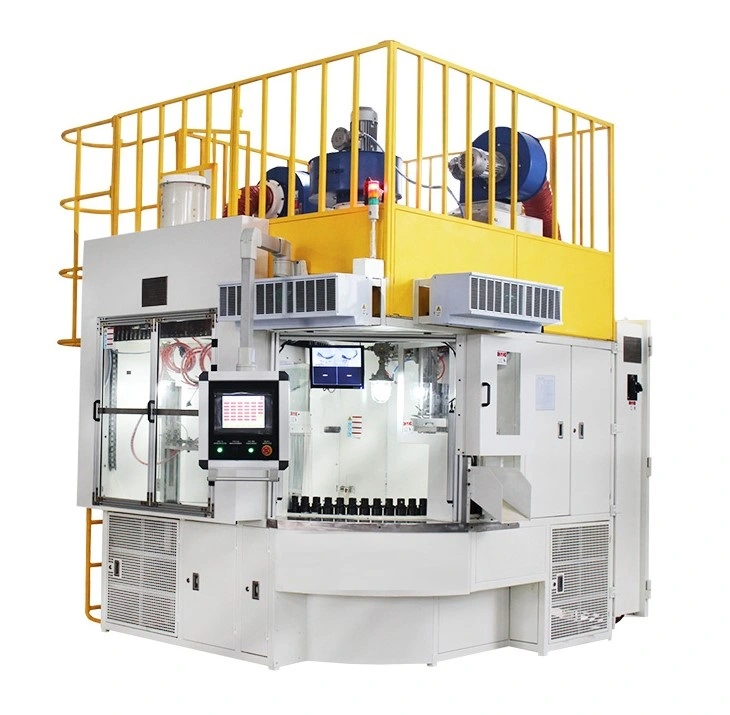
The powder coating industry is continuously evolving, with new technologies and innovations emerging to enhance efficiency, quality, and sustainability. These advancements are driving the industry forward, allowing manufacturers to meet the increasingly stringent demands of various sectors while reducing costs and environmental impact.
Innovations in Powder Coating Machinery and Equipment
Advancements in powder coating machinery have revolutionized the industry, making it possible to achieve higher precision, faster production times, and better overall results. Some of the key innovations include:
- Automated Powder Coating Systems: Automation has significantly improved the efficiency of powder coating operations. Automated systems can handle everything from surface preparation to coating application and curing, reducing the need for manual intervention. These systems are equipped with advanced sensors and controls that ensure consistent coating thickness, even on complex parts. Powder coating systems for sale now often include fully integrated automation options, making them more accessible to manufacturers of all sizes.
- Smart Coating Machines: The introduction of smart technology into coating machines has brought about significant improvements in process control. These machines are capable of adjusting parameters in real-time based on the characteristics of the parts being coated. For example, they can automatically modify spray patterns, gun settings, and curing times to ensure optimal results. This level of precision not only enhances the quality of the coating but also reduces waste and energy consumption.
- Energy-Efficient Curing Ovens: The development of energy-efficient powder coat curing ovens and industrial ovens for powder coating has been a major focus in the industry. These ovens are designed to reduce energy consumption while maintaining consistent curing temperatures. Innovations such as infrared (IR) and ultraviolet (UV) curing technologies have further reduced the time and energy required for curing, allowing for faster throughput and lower operational costs.
- Advanced Surface Preparation Techniques: Surface preparation is critical to the success of the powder coating process, and new technologies have emerged to improve this stage. Innovations in iron phosphate coating and other pre-treatment methods have enhanced adhesion and corrosion resistance, ensuring that the powder coating adheres more effectively to the substrate.
Future Trends in Powder Coating Systems
As the powder coating industry continues to grow, several key trends are shaping its future:
- Sustainability and Eco-Friendly Solutions: The demand for environmentally friendly coatings is on the rise, driven by stricter regulations and a growing focus on sustainability. Powder coatings are inherently more eco-friendly than traditional liquid paints due to their lack of solvents and minimal VOC emissions. However, future advancements are expected to further reduce the environmental impact of powder coating, such as the development of biodegradable powders and more energy-efficient curing methods.
- Customization and Flexibility: The ability to customize powder coating systems to meet specific needs is becoming increasingly important. Manufacturers are looking for systems that can handle a wide variety of products and coating types with minimal changeover time. This trend is driving the development of modular coating systems that can be easily reconfigured for different applications, as well as software solutions that allow for greater flexibility in production scheduling and quality control.
- Integration of Industry 4.0 Technologies: The integration of Industry 4.0 technologies, such as the Internet of Things (IoT), big data analytics, and artificial intelligence (AI), is transforming the powder coating industry. These technologies enable real-time monitoring and control of the coating process, allowing for predictive maintenance, process optimization, and enhanced quality control. For example, IoT-enabled ovens and coating machines can provide detailed performance data that can be used to optimize settings and prevent downtime.
- Enhanced Powder Coating Systems for Specific Applications: As the demand for powder coating grows across different industries, there is a push for systems tailored to specific applications. This includes electrostatic powder coating equipment designed for intricate parts, powder coating for doors with specialized finishes, and coating lines for mechanical equipment used in heavy industries. These systems are expected to become more specialized, offering features that cater to the unique needs of each sector.
Impact of Advanced Technologies on the Industry
The adoption of advanced technologies in powder coating is having a profound impact on the industry. These innovations are enabling manufacturers to:
- Improve Product Quality: With greater control over the coating process, manufacturers can achieve higher quality finishes with fewer defects. This is particularly important in industries such as automotive and aerospace, where product performance and appearance are critical.
- Increase Efficiency and Reduce Costs: Automation, energy-efficient equipment, and smart technologies are helping manufacturers reduce labor costs, energy consumption, and material waste. This not only improves profitability but also enhances the sustainability of the powder coating process.
- Enhance Competitiveness: By adopting the latest technologies, manufacturers can stay ahead of the competition by offering better products and services. This is particularly important in a global market where customers are increasingly demanding high-quality, sustainable products.
In conclusion, the future of powder coating is bright, with advanced technologies paving the way for more efficient, sustainable, and high-quality coating processes. Manufacturers who embrace these innovations will be well-positioned to meet the evolving demands of their industries and achieve long-term success.
Conclusion
Powder coating has established itself as a leading finishing technology across various industries, offering durability, environmental benefits, and cost efficiency. The success of this process, however, relies heavily on the quality and sophistication of the equipment and systems used. From surface preparation and application to curing and handling, each stage requires specialized machinery designed to deliver consistent, high-quality results.
Investing in the right powder coating plants, coating machines, and powder coating machinery is essential for any manufacturer aiming to achieve superior finishes. The advancements in electrostatic powder coating equipment, industrial paint curing ovens, and coating lines for mechanical equipment have significantly enhanced the capabilities of powder coating operations, making them more efficient, reliable, and adaptable to a wide range of applications.
Oven for powder coating, paint curing oven, and other curing equipment are critical components that ensure the powder coating adheres properly and forms a tough, long-lasting surface. The evolution of large powder coat ovens, powder coating systems for sale, and automated powder coating lines has made it possible to scale operations without compromising on quality.
Moreover, the integration of advanced technologies such as IoT, AI, and automation into powder coat systems is driving the industry forward, offering new levels of precision, efficiency, and sustainability. These innovations are not just enhancing product quality but also reducing operational costs and environmental impact, making powder coating an even more attractive option for manufacturers worldwide.
As the demand for high-performance coatings continues to grow, the importance of selecting the right powder coating equipment cannot be overstated. Whether it’s for small-scale operations or large industrial plants, the right investment in equipment will lead to better products, improved customer satisfaction, and a stronger competitive position in the market.
In summary, the powder coating industry is poised for continued growth, driven by technological advancements and the increasing need for durable, eco-friendly finishes. By embracing the latest powder coating machinery and systems, manufacturers can ensure they are well-equipped to meet the challenges and opportunities of the future.
Not only do we manufacture our powder coating equipment, we also ship them worldwide to your facility with care
We’re not just the manufacturers of your powder coating equipment, we’re also your worldwide delivery partners.
At EMS Powder Coating Equipment, we understand that getting your powder coating equipment to you quickly and safely is just as important as manufacturing it to the highest standards. That’s why we offer worldwide delivery services to all of our customers.
We work with a network of experienced and reliable shipping partners to ensure that your equipment arrives on time and in perfect condition. We also offer a variety of shipping options to fit your budget and needs.
Whether you need your equipment shipped to a local address or to an international destination, we can help. We’ll work with you to choose the best shipping option for your needs and to keep you updated on the status of your shipment every step of the way.
So when you choose EMS for your powder coating equipment, you’re not just getting the best products on the market, you’re also getting the best possible delivery experience.
Contact us today to learn more about our worldwide delivery services.
